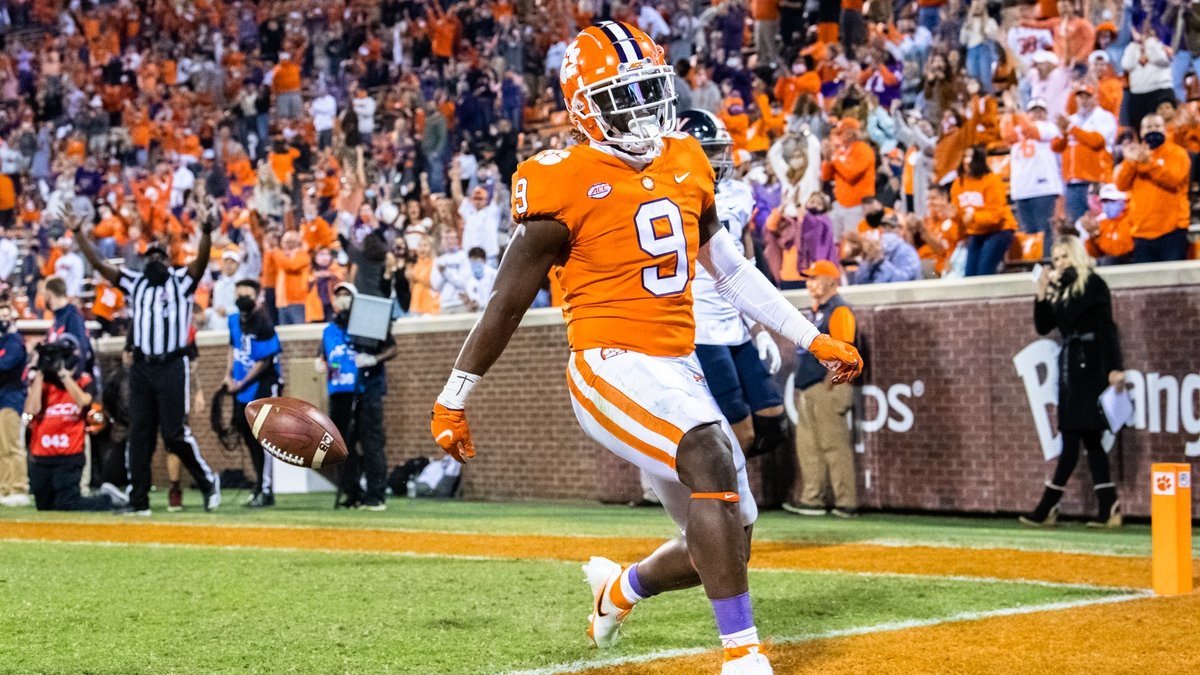Last week, I published my pre-draft quantitative models predicting fantasy success for running backs and wide receivers. A key variable in that analysis was draft position, for which I used expected draft position based on recent mock drafts in lieu of actual draft positions. We have the actual 2021 NFL Draft positions now that the three days of selections are complete, and with those, I can update the model results for the 2021 class with more accurate results.
In this analysis of 2021 NFL Draft prospects at the running back position, I’m going to detail the quantitative process behind the results, including the importance of different features and how measurables, workout metrics and production markers all blend into a single prediction. In this case, the prediction will be focused on fantasy results, specifically the number of top-12 weekly finishes at the position over the prospects' first three NFL seasons. We could extend the window further to cover a player’s entire career, but the point in the real NFL draft and the fantasy rookie counterparts is to see a return on investment earlier rather than later.
This analysis will cover all drafted running backs from the 2021 class, plus a couple of undrafted free agents who were fairly high on the PFF Big Board, using their Pro Day numbers and production metrics to forecast fantasy success.
More of PFF's 2021 NFL Draft tools here:
2021 NFL Draft Big Board | 2021 NFL Draft Guide | 2021 NFL Draft Stats Export | NFL Mock Drafts | NFL Mock Draft Simulator
METHODOLOGY
This analysis uses what is known as an ensemble model, or a blend of the results from different models that are then combined to form a single, and hopefully more precise, final prediction. One of the models is tree-based, the other linear. The historical data from previous running back classes going back to 2006 and through 2018 were used to train the models, including the number of actual top-12 weekly fantasy finishes for those previously drafted running backs. The historical fantasy finishes are based on points-per-reception (PPR) scoring.
The features for each running back in the models are as follows, ordered by relative importance and statistical significance. The stats are from the prospects’ best statistical season in which they played at least five games and logged at least 100 carries:
- Draft position
- Share of total team yards
- Rushing yards per game
- Share of total team touchdowns
- 40-yard dash
- Receptions per game
- Weight
- Age
Draft position is, by far, the most important feature in predicting fantasy success for running backs, followed by production and measurables. Workout metrics in the model were limited to the 40-yard dash due to its ubiquity and outsized influence on NFL draft position for running backs. For the 2021 class, the 40-yard dash times are from pro days, with a 0.03 penalty for comparison to combine times.
Higher drafted running backs at top programs are more often coming from backfields with two or even three drafted players, thereby diluting their shares of team production due to splitting workloads. To account for this, I adjusted up the shares of total team yards and touchdowns for running backs who played with other drafted running backs in their final seasons.
Exclusive content for premium subscribers

WANT TO KEEP READING?
Dominate Fantasy Football & Betting with AI-Powered Data & Tools Trusted By All 32 Teams
Already have a subscription? Log in



 © 2025 PFF - all rights reserved.
© 2025 PFF - all rights reserved.